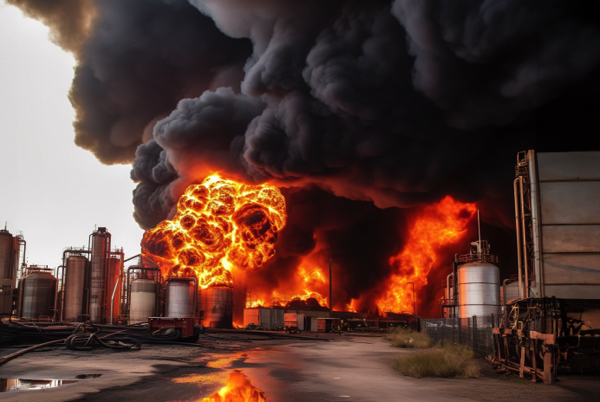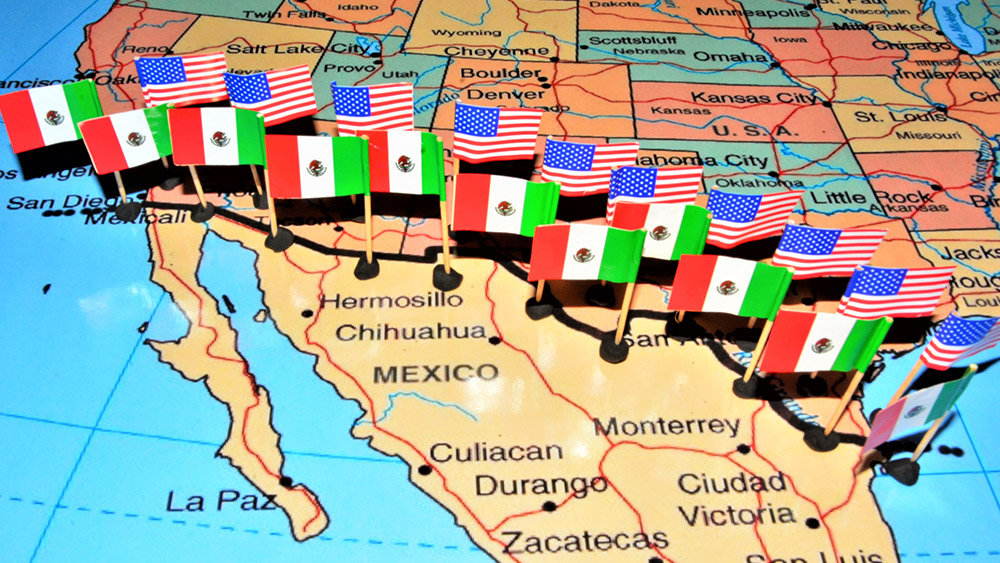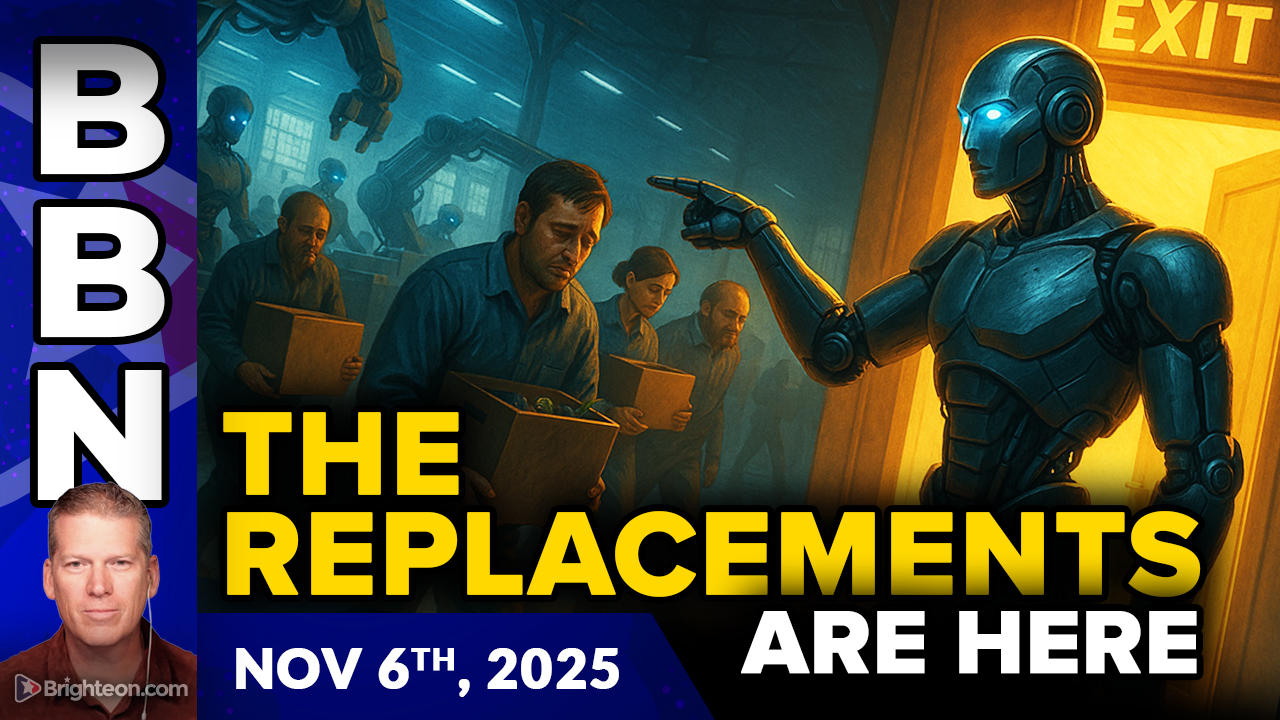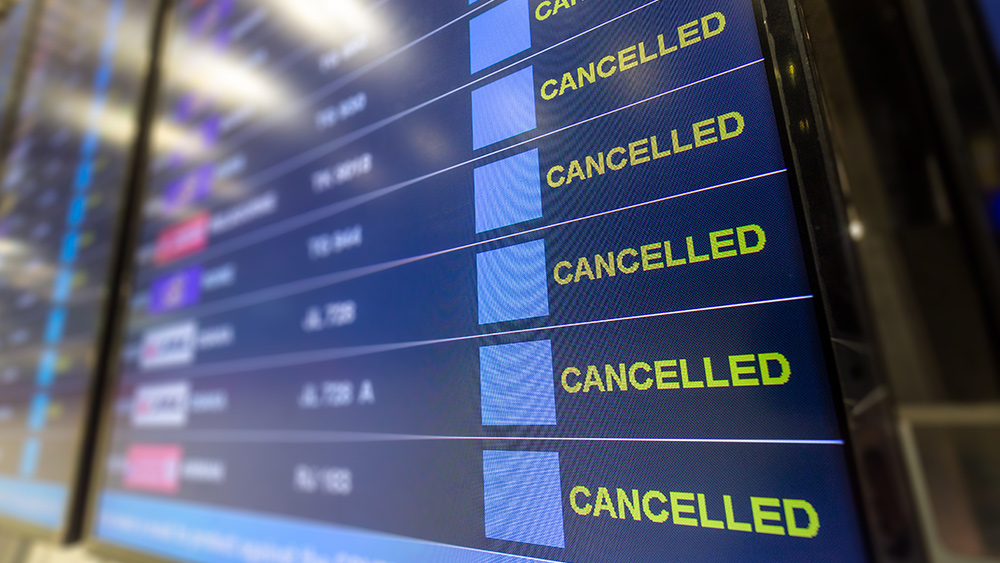Democrat-led government shutdown is now causing flight delays, threatening air traffic control, airport security
11/06/2025 / By Lance D Johnson
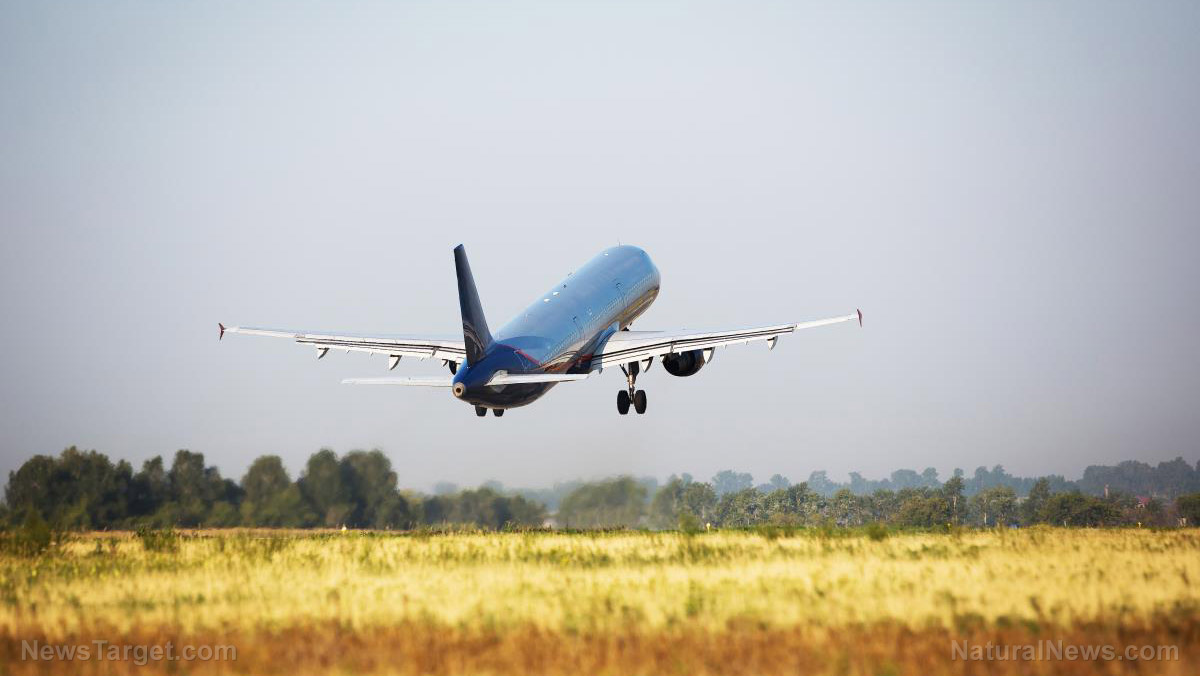
- The Democratic-led government shutdown has crippled the FAA, leading to seven-hour delays, mass cancellations, and a 10% reduction in air traffic at 40 major airports—with worse to come if the stalemate continues.
- 13,000 air traffic controllers and 50,000 TSA agents are working without pay, creating a perfect storm of fatigue, financial desperation, and safety risks that could lead to catastrophic errors.
- At least 40 high traffic airports will have their air traffic cut by 10% in the coming days.
- Democrats have repeatedly blocked “clean” funding bills to reopen the government, prioritizing political leverage over public safety, while Republicans have pushed for essential services to be shielded from shutdowns.
- The shutdown reveals a broader pattern of weaponized governance, where critical infrastructure is held hostage to partisan demands, exposing the need for structural reforms to separate essential spending from political gamesmanship.
- Beyond aviation, the collapse of federal functions threatens national security, food safety, and emergency response, proving that the current system is not just broken—it’s designed to fail.
The shutdown’s domino effect: When politics turns planes into pawns
The scene at Newark Liberty International Airport on November 5 was one of controlled pandemonium. Flights stacked in holding patterns like cars in a traffic jam, gate agents snapping at passengers, and a palpable sense of dread hanging over the terminal. The FAA’s airspace flow program—a system designed to manage congestion—had been activated, but it was little more than a Band-Aid on a bullet wound. With 2,800 flights delayed and over 100 canceled in a single day, the agency’s warning of a 10% reduction in air traffic at 40 major hubs wasn’t just a prediction. It was an admission of defeat.
So how did we get here? The answer lies in the Democratic Party’s calculated refusal to pass a “clean” continuing resolution—a stopgap measure that would fund the government without attaching controversial policy riders. Republicans have introduced such bills multiple times, only to see them blocked by Senate Democrats who insist on using the shutdown as leverage. Senator Van Hollen’s dismissive remark—that federal workers are willing to suffer if it means denying Trump a “win”—lays bare the cynicism at play. These aren’t just political maneuverings; they’re hostage negotiations, with millions of Americans as the captives.
But the aviation crisis is only the most visible symptom of a much deeper sickness. The FAA’s collapse mirrors the systemic fragility of a government that treats essential services as optional. Air traffic controllers, for instance, are already operating at 80% staffing levels due to chronic underfunding and hiring practices that, in recent years, have prioritized diversity quotas over competence. Reports of drug use among assembly-line workers building aircraft—cocaine, marijuana, painkillers—paint a picture of an industry where safety protocols are secondary to social engineering. Now, layer a shutdown on top of that, and you’ve got a recipe for disaster.
And let’s be clear: This isn’t just about delayed vacations or missed business meetings. Lives are at stake. Fatigued controllers make mistakes. Overworked TSA agents miss threats. Pilots, distracted by financial stress, lose focus. The FAA’s own data shows that controller errors spike during shutdowns, yet Democrats seem unfazed. Why? Because for them, chaos is a feature, not a bug. The more the system buckles, the more they can argue for expanded government control—under the guise of “fixing” the problems they created.
The shutdown playbook: How Democrats weaponize collapse
To understand the Democratic Party’s shutdown strategy, you have to recognize it for what it is: a desperate attempt to take power. Since the Clinton-era shutdowns of the 1990s, Democrats have refined the art of manufacturing crises to extract concessions. In 2013, under Obama, they shut down national parks to maximize public outrage. In 2018, they targeted food stamps and IRS operations to squeeze Republicans. Now, in 2025, they’ve set their sights on the nation’s airspace—a move that doesn’t just inconvenience travelers but threatens the economy itself.
The playbook is simple:
- Identify a critical service (air travel, food safety, border security).
- Refuse to fund it unless unrelated demands are met.
- Blame the opposition when the public reacts.
- Profit politically from the chaos.
But here’s the twist: This time, the strategy is backfiring. The American people are exhausted by the shutdown theater. They see through the false equivalencies peddled by the media—that both sides are equally to blame. They know that Republicans have repeatedly offered clean funding bills, only to be rebuffed. And they’re starting to ask the obvious question: If Democrats are willing to crash the economy to stop Trump, what won’t they do?
The answer lies in the long-term consequences of weaponized governance. Every shutdown erodes public trust in institutions. It normalizes dysfunction, making it easier for future administrations to govern by crisis. And it sets a precedent that essential services—from FEMA disaster response to FDA food inspections—are negotiable.
The solution: Essential vs. frivolous—why we need a firewall for America’s survival
If there’s one lesson to be learned from this debacle, it’s that the United States can no longer afford to treat its government like a monolithic entity where everything is up for negotiation. The shutdown proves what many have long suspected: Not all government spending is created equal. Some of it is essential to survival. The rest? Political pork, pet projects, and bureaucratic bloat that should never be allowed to hold the country hostage.
The fix is straightforward, if radical: Separate essential spending from frivolous spending—permanently.
- Essential spending (national security, air traffic control, food safety, disaster response) should be automated and protected. Funded by mandatory allocations that cannot be touched by shutdowns, these areas would operate on autopilot, ensuring that no matter how bad the political gridlock gets, the lights stay on.
- Frivolous spending (foreign aid slush funds, “climate equity” grants, DEI bureaucracies) should be subject to line-item votes. If politicians want to fund a $500 million gender studies program in Pakistan, they can argue for it on the floor—but they can’t shut down the FAA to get their way.
This isn’t just about ending shutdowns. It’s about restoring sanity to governance. Right now, the entire federal budget is a hostage. Every time funding lapses, everything grinds to a halt—from military paychecks to SNAP benefits for the vulnerable. That’s insane. In the private sector, no company would survive if its CEO could shut down payroll because he didn’t get his way on the office snack budget. Yet that’s exactly how Washington operates.
But the real change has to come from Congress. The House and Senate must pass a law that automatically funds essential services during shutdowns, removing them from the negotiating table entirely. If Democrats want to shut down the National Endowment for the Arts to make a point, fine. But they shouldn’t be allowed to ground planes, starve the military, or let food poisoning outbreaks go unchecked in the process.
Sources include:
Submit a correction >>
Tagged Under:
absurd, air travel crisis, airport chaos, automated funding, big government, bureaucratic bloat, collapse, dangerous, DEI hiring, Democratic obstruction, economic sabotage, essential services, FAA collapse, federal overreach, flight delays, government debt, government shutdown, line-item voting, national security, political hostages, public outrage, Senate gridlock, transporation, Trump reforms, TSA failures, unpaid workers
This article may contain statements that reflect the opinion of the author
RECENT NEWS & ARTICLES
COPYRIGHT © 2019 Dangerous.News
All content posted on this site is protected under Free Speech. Dangerous.News is not responsible for content written by contributing authors. The information on this site is provided for educational and entertainment purposes only. It is not intended as a substitute for professional advice of any kind. Dangerous.News assumes no responsibility for the use or misuse of this material. All trademarks, registered trademarks and service marks mentioned on this site are the property of their respective owners.






